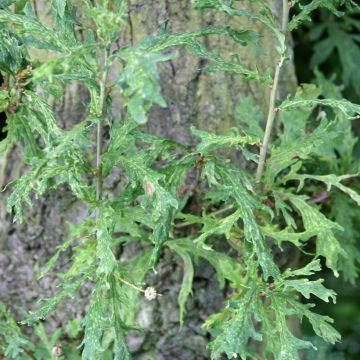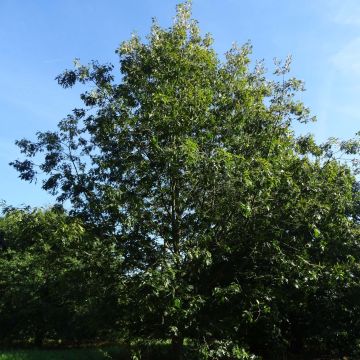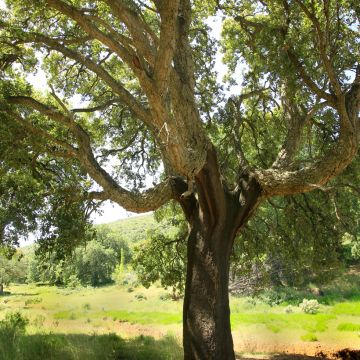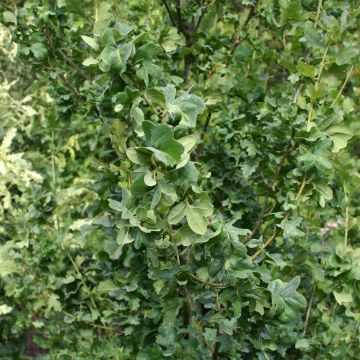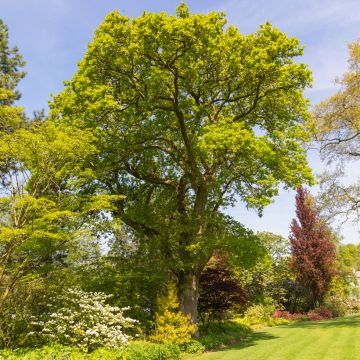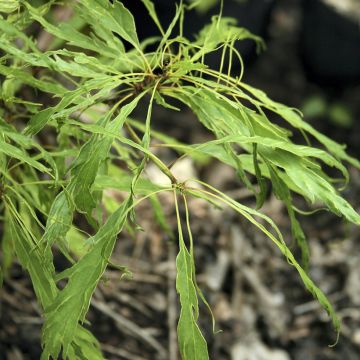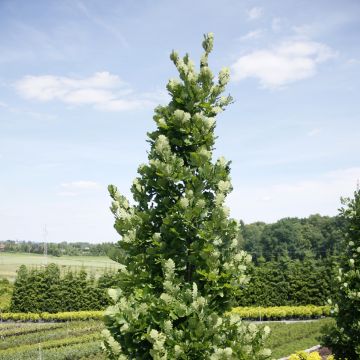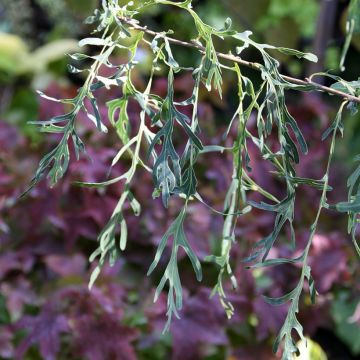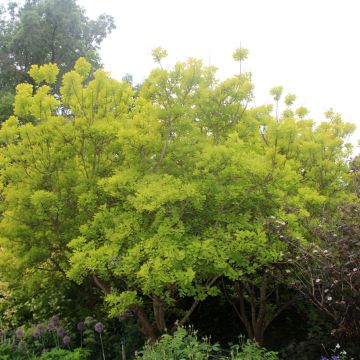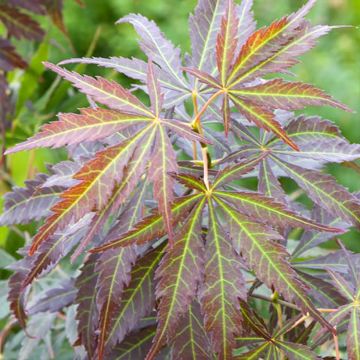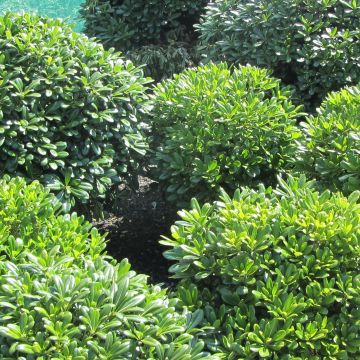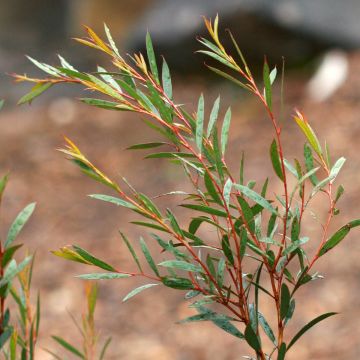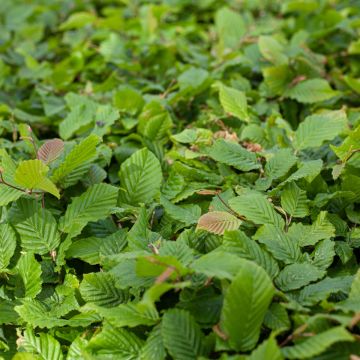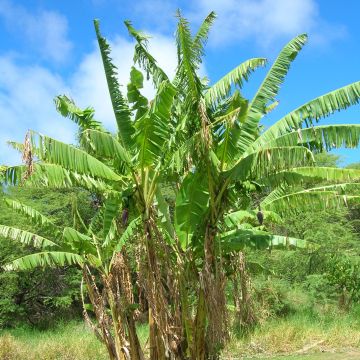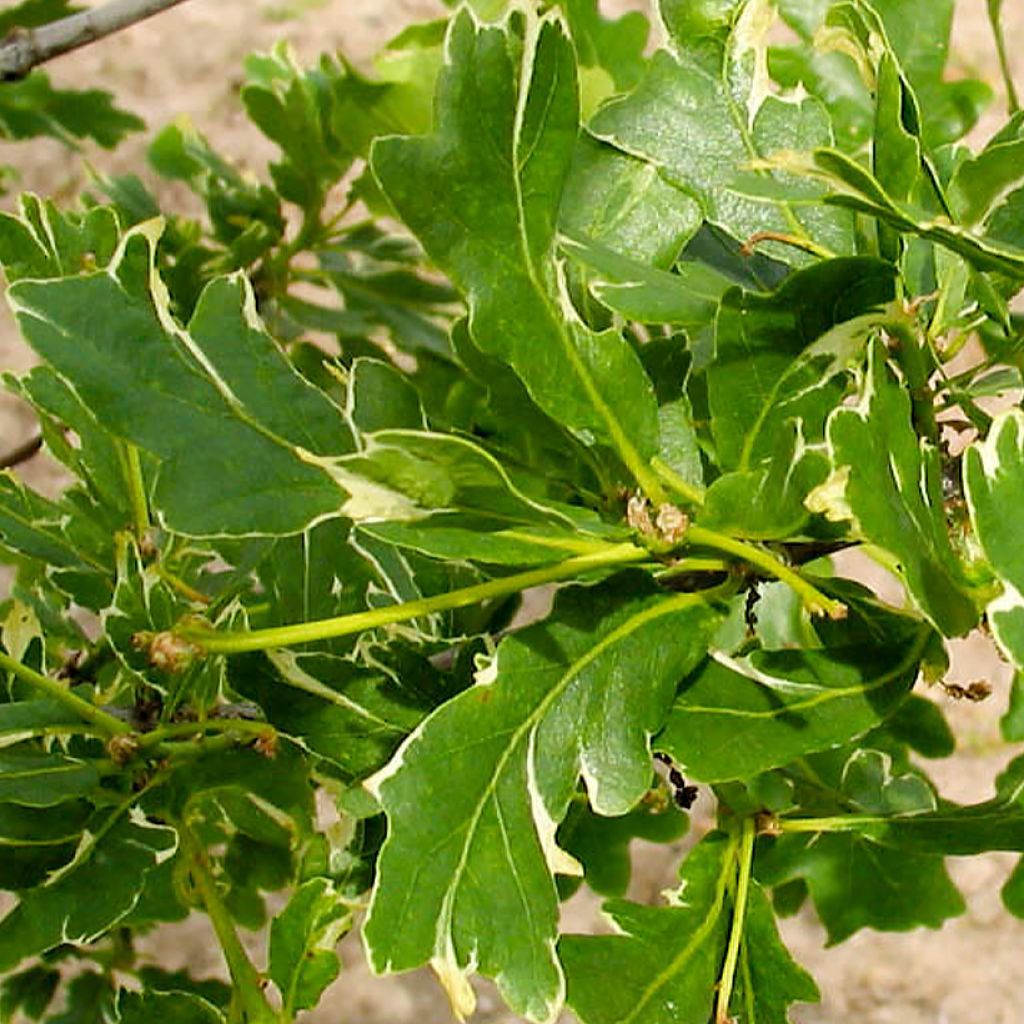

Quercus robur Argenteomarginata - English Oak
Quercus robur Argenteomarginata - English Oak
Quercus robur Argenteomarginata
English Oak, Common Oak, Pedunculate Oak
Special offer!
Receive a €20 voucher for any order over €90 (excluding delivery costs, credit notes, and plastic-free options)!
1- Add your favorite plants to your cart.
2- Once you have reached €90, confirm your order (you can even choose the delivery date!).
3- As soon as your order is shipped, you will receive an email containing your voucher code, valid for 3 months (90 days).
Your voucher is unique and can only be used once, for any order with a minimum value of €20, excluding delivery costs.
Can be combined with other current offers, non-divisible and non-refundable.
Home or relay delivery (depending on size and destination)
Schedule delivery date,
and select date in basket
This plant carries a 24 months recovery warranty
More information
We guarantee the quality of our plants for a full growing cycle, and will replace at our expense any plant that fails to recover under normal climatic and planting conditions.
Would this plant suit my garden?
Set up your Plantfit profile →
Description
The Quercus robur 'Argenteomarginata' is an unusual variegated form of our venerable Pedunculate Oak. Smaller and slower-growing, this tree has much more decorative foliage, as each leaf is finely edged with white on a green background. Rare in cultivation, this Oak is perfect for bringing light and creating a strong contrast in the garden. It prefers non-burning sun and rich, deep, and moist soils.
The Oak, in Latin Quercus, is a member of the Fagaceae family, like Beech and Chestnut. The Pedunculate Oak is a tree native to a large portion of temperate Europe. It grows well in sub-oceanic to oceanic climates or relatively humid continental climates without excess. This tree is commonly found in low-lying plains and hills but is rare in areas that are too dry and hot. There are around 240 named cultivars of the Pedunculate Oak, including 'Argenteomarginata'.
The Quercus robur 'Argenteomarginata' has a relatively slow growth rate. Its habit is rounded, slightly narrower than it is tall. At maturity, it reaches about 12 m (39ft) in height, and its crown measures 10 m (33ft) in width. The short trunk is initially green and smooth, then becomes dark, thick, and deeply fissured. The crown is irregular, oval, rounded, and open. Its young branches are glabrous, grey-brown, and shiny. The foliage, which is late deciduous, consists of alternate, soft, obovate leaves that can reach 5 to 15 cm (2 to 6in) in length and 3 to 8 cm (1 to 3in) in width. Each leaf is divided into 5 to 7 pairs of asymmetrical rounded lobes, separated by relatively deep sinuses. The base of the lamina is narrow and has two small lobes. The colour of the lamina is dark bluish-green on the upper side, with a more or less delicate cream-white border, creating a nice contrast. The underside of the leaf is paler. The leaves turn brown late in autumn and remain attached to the branches before falling. The flowering of this oak occurs in April-May, shortly after the appearance of the foliage on the annual shoots.
The female flowers are placed in a cupule carried by a long peduncle: this distinctive feature is the origin of the species name, pedunculata. The male inflorescences are elongated, pendulous catkins tinged with yellow. They are produced on older branches. The female flowers give way to oval and elongated acorns, measuring 1.5 to 3 cm (1in) in length. They are often grouped in pairs or threes and attached to a long peduncle. A cupule covered with scales covers one-third of the acorn. The colour changes from green to brown at maturity in September and October. The root system of this tree is deep and powerful, with both a taproot and extensive lateral roots, providing a solid and enduring anchorage in deep and compact soils.
The Quercus robur 'Argenteomarginata' will delight enthusiasts of rare trees and variegated foliage. More manageable than the king of the forest, this Oak will become a centrepiece in a medium-sized garden, planted as a specimen. It can be planted in front of a large shrub bed composed of conifers or small trees with dark foliage, such as a purple hazel or a 'Black Lace' elderberry. Note that deciduous oaks have the advantage of producing good, abundant leaf litter, which is favourable for the growth of plants that germinate under their canopy.
Report an error about the product description
Quercus robur Argenteomarginata - English Oak in pictures
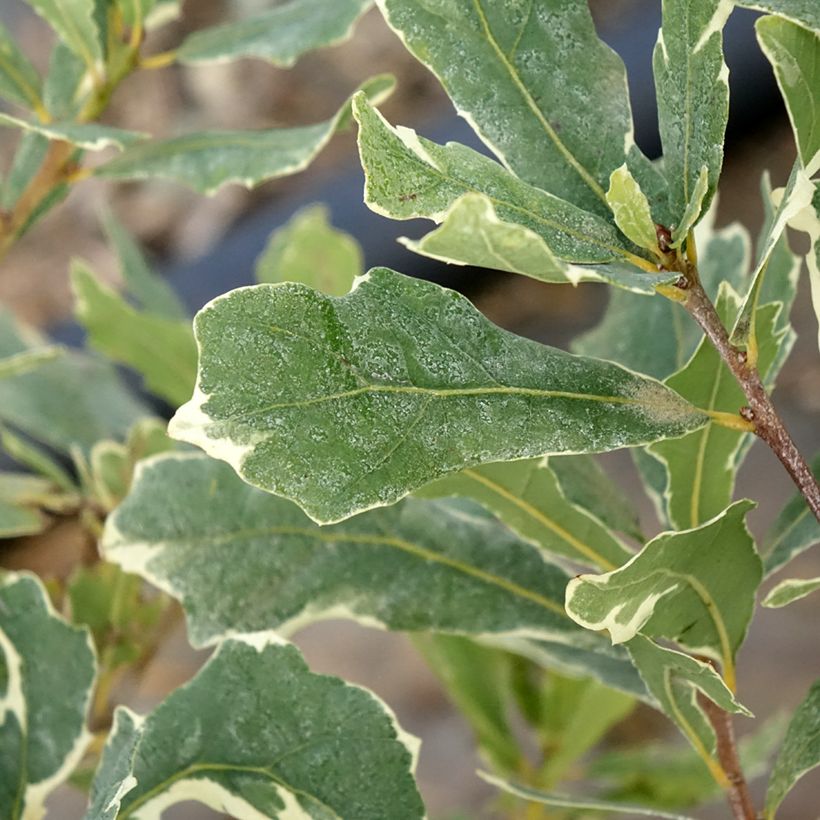

Plant habit
Foliage
Botanical data
Quercus
robur
Argenteomarginata
Fagaceae
English Oak, Common Oak, Pedunculate Oak
Cultivar or hybrid
Other Oak
View all →Planting and care
The Quercus robur 'Argenteomarginata' grows in ordinary soil but deep, moist in depth, preferably clayey, slightly chalky, neutral or slightly acidic. Once established, this tree with deep anchoring withstands typical summers and does not require any watering. It appreciates wet but well-drained soils, where its growth will be faster. Dry and/or sandy soils restrict its growth and prevent it from reaching its normal size.
It prefers sunny and well-cleared exposures, but its variegated foliage can be burned by very harsh sunlight, especially in hot climates. Soak the root ball in a bucket for fifteen minutes before planting, and then water generously. Place a stake to help it start, follow the watering for the first two years, and let nature take its course. Once established, it is a tree that requires very little maintenance except for removing dead wood. It is not very prone to diseases.
Planting period
Intended location
Care
This item has not been reviewed yet - be the first to leave a review about it.
Similar products
Haven't found what you were looking for?
Hardiness is the lowest winter temperature a plant can endure without suffering serious damage or even dying. However, hardiness is affected by location (a sheltered area, such as a patio), protection (winter cover) and soil type (hardiness is improved by well-drained soil).

Photo Sharing Terms & Conditions
In order to encourage gardeners to interact and share their experiences, Promesse de fleurs offers various media enabling content to be uploaded onto its Site - in particular via the ‘Photo sharing’ module.
The User agrees to refrain from:
- Posting any content that is illegal, prejudicial, insulting, racist, inciteful to hatred, revisionist, contrary to public decency, that infringes on privacy or on the privacy rights of third parties, in particular the publicity rights of persons and goods, intellectual property rights, or the right to privacy.
- Submitting content on behalf of a third party;
- Impersonate the identity of a third party and/or publish any personal information about a third party;
In general, the User undertakes to refrain from any unethical behaviour.
All Content (in particular text, comments, files, images, photos, videos, creative works, etc.), which may be subject to property or intellectual property rights, image or other private rights, shall remain the property of the User, subject to the limited rights granted by the terms of the licence granted by Promesse de fleurs as stated below. Users are at liberty to publish or not to publish such Content on the Site, notably via the ‘Photo Sharing’ facility, and accept that this Content shall be made public and freely accessible, notably on the Internet.
Users further acknowledge, undertake to have ,and guarantee that they hold all necessary rights and permissions to publish such material on the Site, in particular with regard to the legislation in force pertaining to any privacy, property, intellectual property, image, or contractual rights, or rights of any other nature. By publishing such Content on the Site, Users acknowledge accepting full liability as publishers of the Content within the meaning of the law, and grant Promesse de fleurs, free of charge, an inclusive, worldwide licence for the said Content for the entire duration of its publication, including all reproduction, representation, up/downloading, displaying, performing, transmission, and storage rights.
Users also grant permission for their name to be linked to the Content and accept that this link may not always be made available.
By engaging in posting material, Users consent to their Content becoming automatically accessible on the Internet, in particular on other sites and/or blogs and/or web pages of the Promesse de fleurs site, including in particular social pages and the Promesse de fleurs catalogue.
Users may secure the removal of entrusted content free of charge by issuing a simple request via our contact form.
The flowering period indicated on our website applies to countries and regions located in USDA zone 8 (France, the United Kingdom, Ireland, the Netherlands, etc.)
It will vary according to where you live:
- In zones 9 to 10 (Italy, Spain, Greece, etc.), flowering will occur about 2 to 4 weeks earlier.
- In zones 6 to 7 (Germany, Poland, Slovenia, and lower mountainous regions), flowering will be delayed by 2 to 3 weeks.
- In zone 5 (Central Europe, Scandinavia), blooming will be delayed by 3 to 5 weeks.
In temperate climates, pruning of spring-flowering shrubs (forsythia, spireas, etc.) should be done just after flowering.
Pruning of summer-flowering shrubs (Indian Lilac, Perovskia, etc.) can be done in winter or spring.
In cold regions as well as with frost-sensitive plants, avoid pruning too early when severe frosts may still occur.
The planting period indicated on our website applies to countries and regions located in USDA zone 8 (France, United Kingdom, Ireland, Netherlands).
It will vary according to where you live:
- In Mediterranean zones (Marseille, Madrid, Milan, etc.), autumn and winter are the best planting periods.
- In continental zones (Strasbourg, Munich, Vienna, etc.), delay planting by 2 to 3 weeks in spring and bring it forward by 2 to 4 weeks in autumn.
- In mountainous regions (the Alps, Pyrenees, Carpathians, etc.), it is best to plant in late spring (May-June) or late summer (August-September).
The harvesting period indicated on our website applies to countries and regions in USDA zone 8 (France, England, Ireland, the Netherlands).
In colder areas (Scandinavia, Poland, Austria...) fruit and vegetable harvests are likely to be delayed by 3-4 weeks.
In warmer areas (Italy, Spain, Greece, etc.), harvesting will probably take place earlier, depending on weather conditions.
The sowing periods indicated on our website apply to countries and regions within USDA Zone 8 (France, UK, Ireland, Netherlands).
In colder areas (Scandinavia, Poland, Austria...), delay any outdoor sowing by 3-4 weeks, or sow under glass.
In warmer climes (Italy, Spain, Greece, etc.), bring outdoor sowing forward by a few weeks.






























